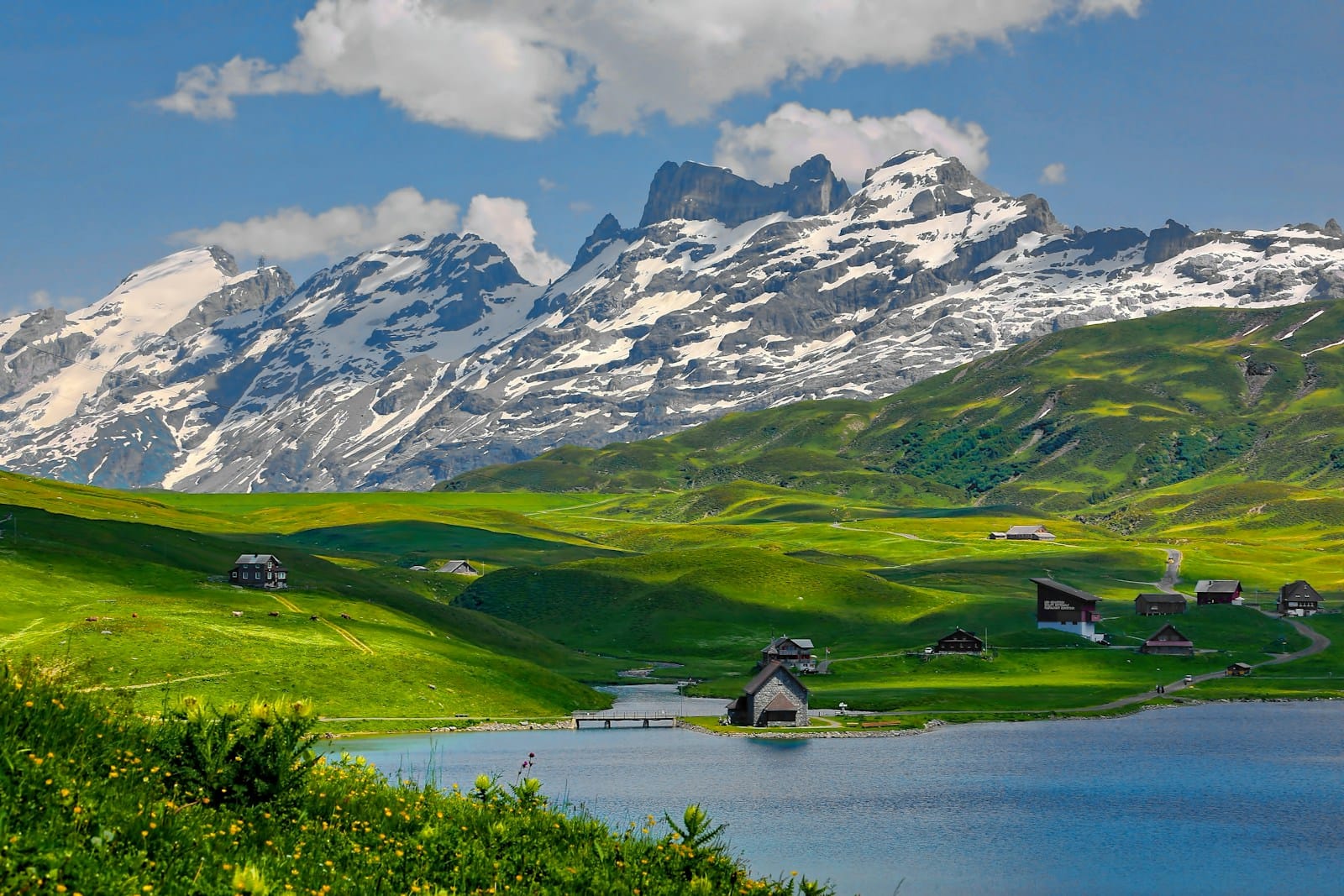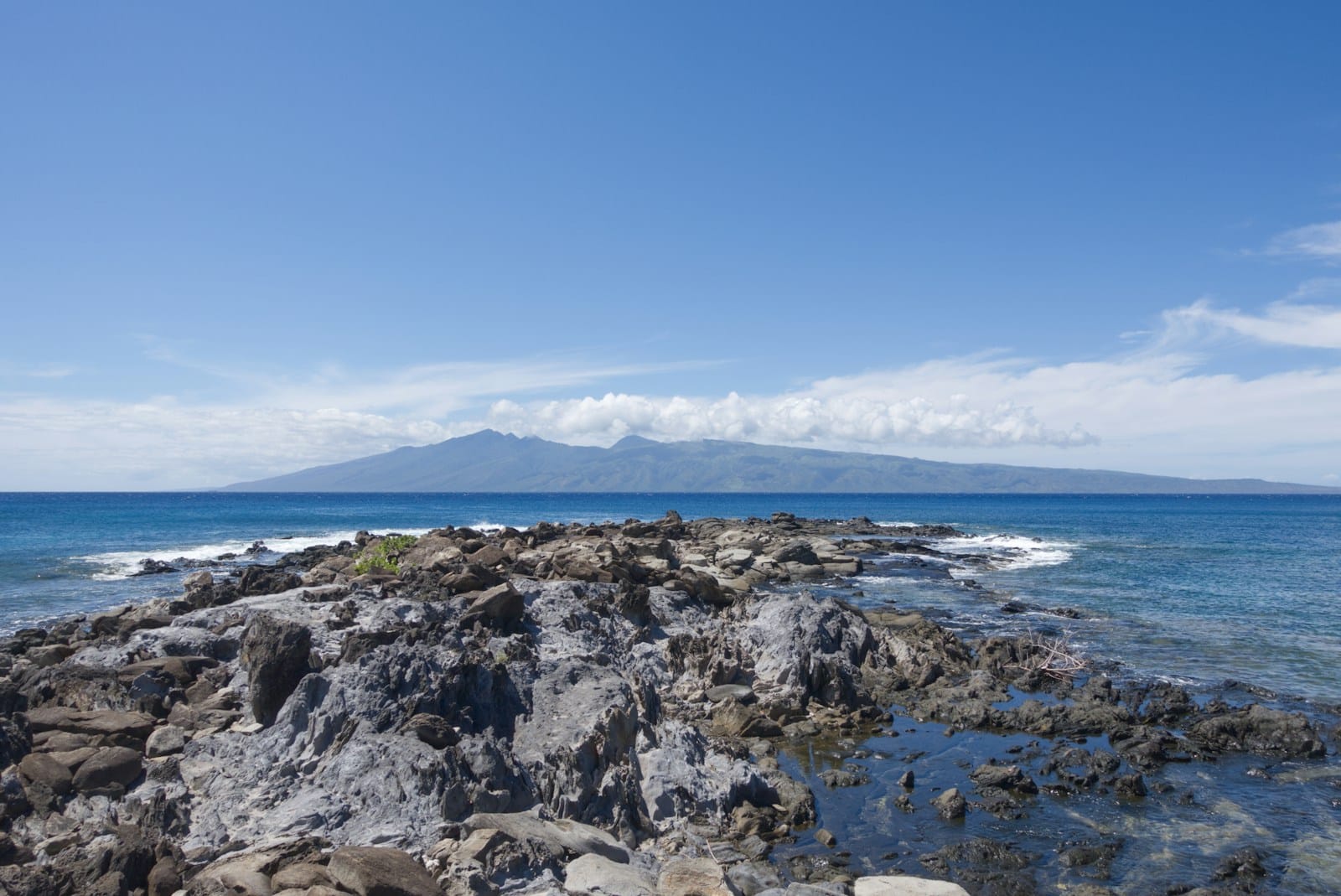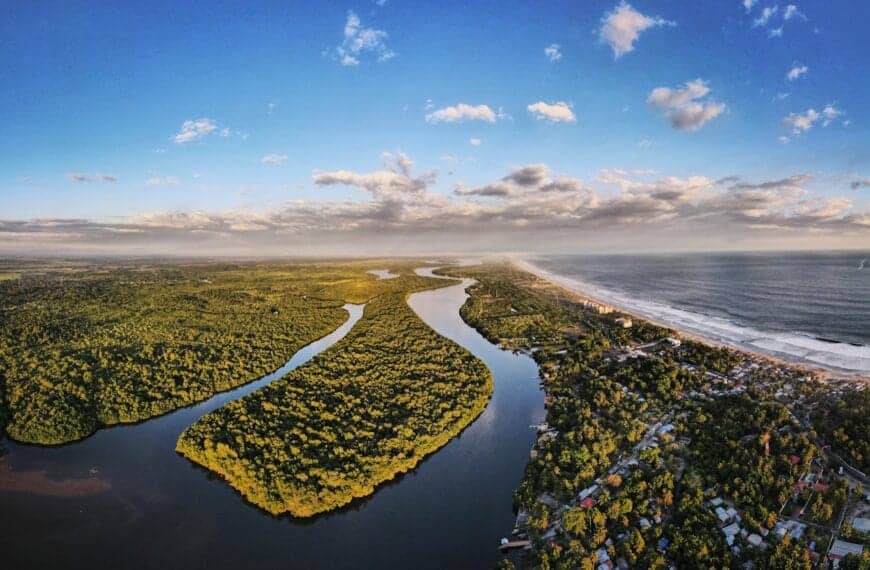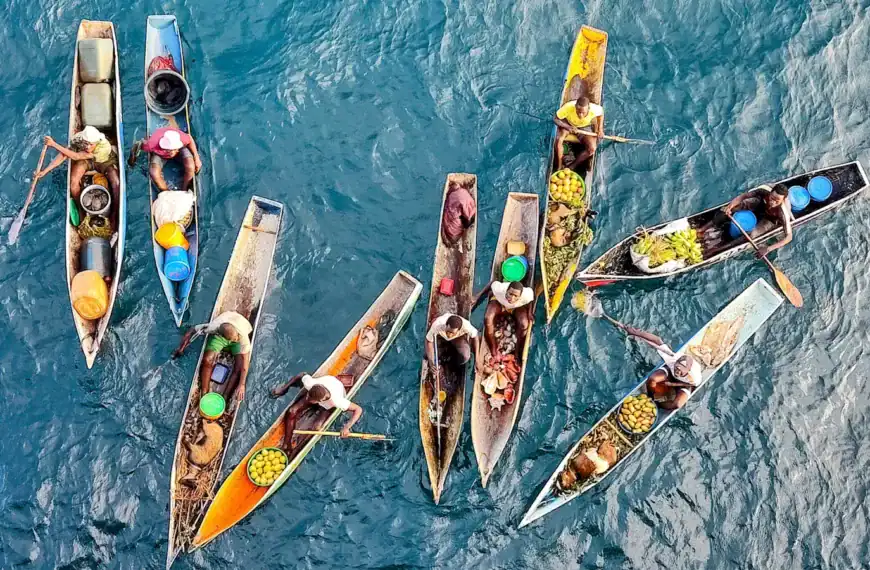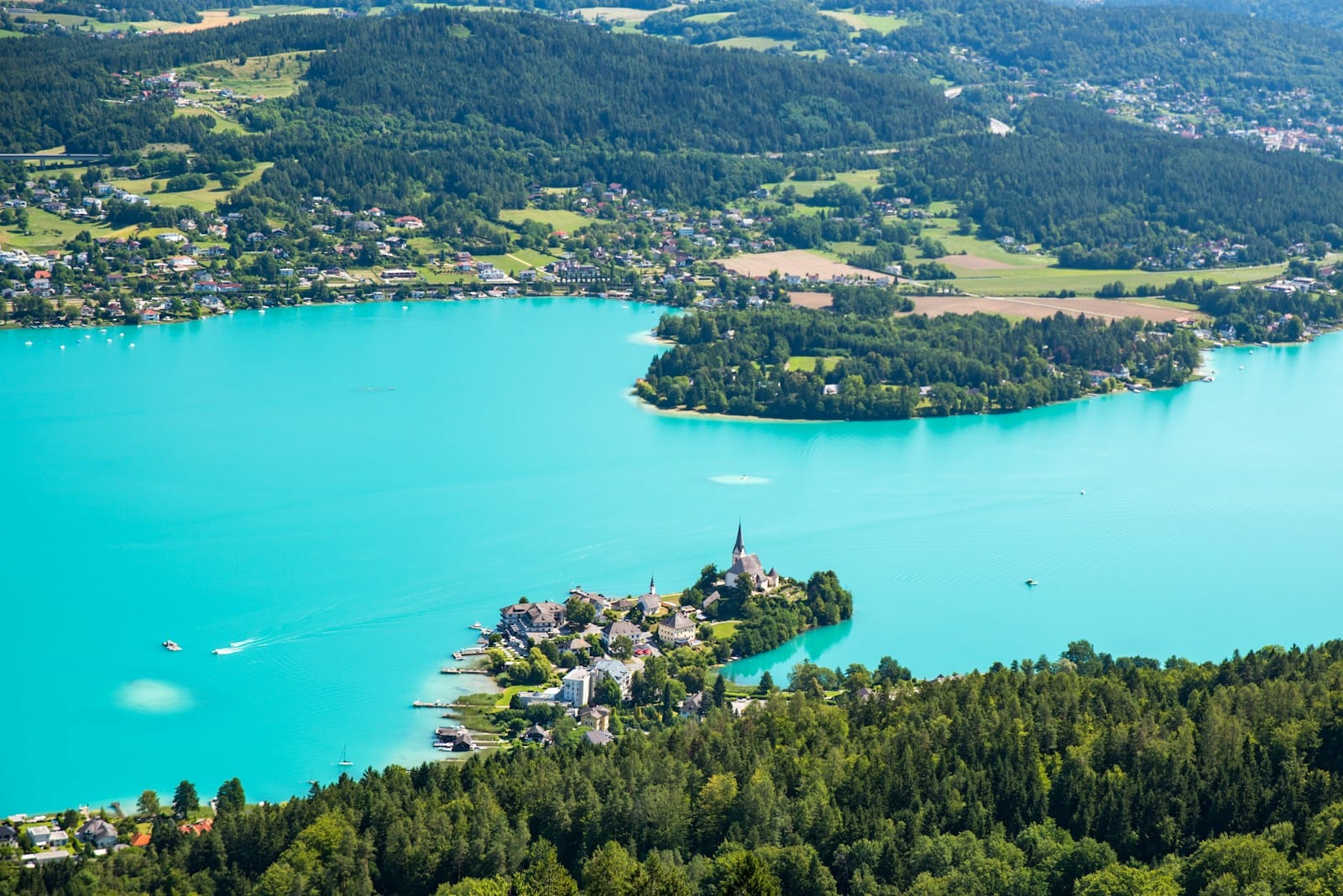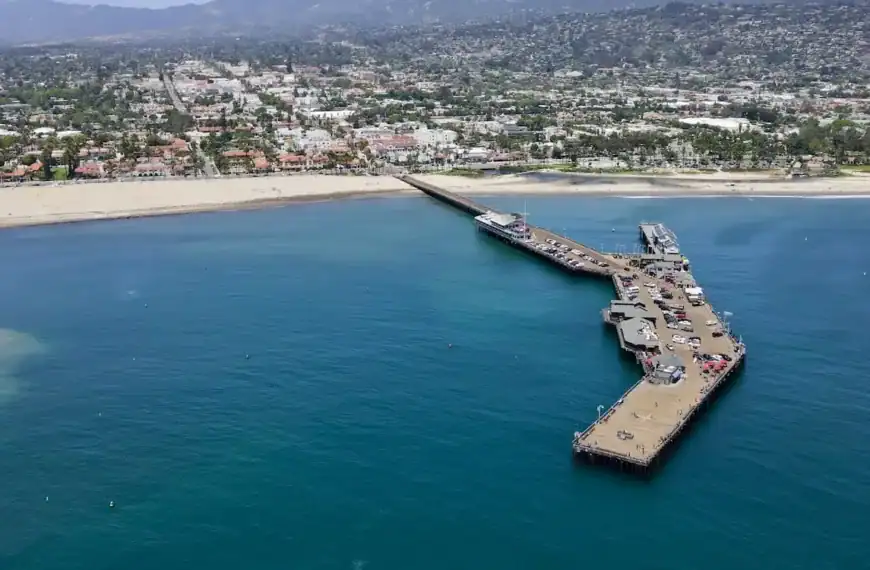Switzerland Travel Guide: Alpine Beauty, Lakeside Towns & Timeless Precision
Explore Switzerland
Switzerland is where mountain dreams meet meticulous design — a land where the Alps rise above mirror-still lakes, trains glide through emerald valleys, and every village clock seems perfectly on time. This Switzerland travel guide brings you from snow-dusted peaks to vineyard trails, from medieval cities to alpine spas. Explore world-famous regions, discover hidden gems, and plan your ideal Swiss adventure with confidence and ease.
For a seamless trip, browse top-rated Switzerland tours and curated activities that highlight the best things to do in Switzerland.
Exploring Switzerland
Aargau | Appenzell Ausserrhoden | Appenzell Innerrhoden | Basel-Landschaft | Basel-Stadt | Bern | Fribourg | Geneva | Glarus | Graubünden | Jura | Lucerne | Neuchâtel | Nidwalden | Obwalden | Schaffhausen | Schwyz | Solothurn | St. Gallen | Thurgau | Ticino | Uri | Valais | Vaud | Zug | Zurich
💡Quick Facts:
Destination: Switzerland — landlocked federal republic in central Europe bordered by France, Germany, Italy, Austria, and Liechtenstein.
Area: 41,285 km² / 15,940 mi² (Swiss Federal Statistical Office – FSO).
Population: ≈ 8.9 million (2024 estimate).
Capital: Bern.
Major cities: Zurich, Geneva, Basel, Lausanne, Lucerne, Lugano.
Official languages: German (DE), French (FR), Italian (IT), Romansh (RM).
Currency: Swiss Franc (CHF) (Swiss National Bank).
Time zone: UTC +1 (CET) / UTC +2 (CEST summer).
Main airports: Zurich (ZRH), Geneva (GVA), Basel-Mulhouse (BSL/MLH/EAP).
Climate: Alpine and temperate; cooler in mountains, mild in lowlands; heavy snowfall Dec–Mar.
Known for: Swiss Alps, banking and watchmaking heritage, neutrality, multilingual culture, and UNESCO-listed landscapes.
Major religions: Christianity (Roman Catholic and Reformed Protestant).
🛂Arrival Info:
Entry requirements (U.S. citizens): Visa-free up to 90 days within 180-day Schengen zone (State Secretariat for Migration – SEM).
ETIAS: Required for non-EU visa-free travelers from 2025 (European Commission – ETIAS).
Border crossings: Open Schengen internal borders; passport or ID required for random checks.
Customs: Duty-free import limits on alcohol, tobacco, and goods; cash declaration above CHF 10,000 (Swiss Federal Customs Administration – FCA).
Major land entries: Basel (France/Germany), Chiasso (Italy), St. Margrethen (Austria).
🏥Health Info:
Vaccinations: Routine immunizations recommended; tick-borne encephalitis (TBE) vaccine advised for rural/hiking areas.
Healthcare quality: Excellent; travelers should hold valid health insurance for EU/EEA standards.
Emergency number: 144 (medical) / 117 (police) / 118 (fire).
Tap water: Safe to drink nationwide; sourced from alpine springs.
🚑 Check travel insurance options for travel emergencies, delays, and medical needs abroad — Get coverage here
💉 Stay Informed with Official Updates: WHO – International Travel & Health | CDC – Travel health updates
🚨Travel Advisory:
Current risk level: Exercise normal precautions.
Risks: Mountain weather changes rapidly; avalanches possible Dec–Apr (Swiss Avalanche Bulletin – SLF).
Civil rights: Same-sex marriage legal since 2022; comprehensive anti-discrimination laws (Swiss Federal Council).
🌍Track Real-Time Official Updates: US Travel Advisory | UK Foreign Travel Advice | Government of Canada | NZ SafeTravel
🥳Holidays:
1 Jan — New Year’s Day.
7 Apr — Good Friday (movable).
10 Apr — Easter Monday (movable).
1 May — Labour Day (varies by canton).
9 May — Ascension Day.
19 May — Whit Monday.
1 Aug — Swiss National Day.
25 Dec — Christmas Day.
26 Dec — St. Stephen’s Day.
💰Visitor Info:
Currency use: CHF preferred; EUR accepted near borders but change in CHF.
Tipping: Not obligatory; round up bills or leave 5–10%.
Tourist taxes: City accommodation tax (CHF 2–7 per night) applied locally (Switzerland Tourism).
Average daily budget: Budget CHF 100–150 / Mid-range CHF 180–300 / Luxury CHF 400+.
🛫Airports:
Zurich (ZRH): Largest and most connected international hub
Geneva (GVA): Gateway to French-speaking Switzerland and Lake Geneva
Basel-Mulhouse (BSL): Tri-national airport also serving France and Germany
Regional airports include Bern and Lugano
Efficient rail connections from airports to city centers and mountain resorts
🧳 Delayed or canceled flight? Check if you’re eligible for compensation
🚍Transport:
Driving: Right-hand side; highway vignette required (CHF 40) (Federal Roads Office – FEDRO).
Public transit: Extensive SBB rail network, regional trams, buses, and boats (Swiss Federal Railways – SBB).
Intercity travel: Rail punctuality among best in Europe; Swiss Travel Pass valid nationwide (Swiss Travel System).
Mountain transport: Cable cars and cog railways in alpine regions; weather-dependent operation.
🚗 Book reliable airport transfers and in-city rides in advance. Reserve your ride here
🛰️Connectivity:
Mobile carriers: Swisscom, Sunrise, Salt.
SIM / eSIM: Available at airports and train stations; ID required.
Internet: Excellent 4G/5G coverage; free Wi-Fi common in cities.
Power: 230 V / 50 Hz; Type C and J plugs.
🛜 Stay connected abroad with affordable eSIM data packs. Get your eSIM here
📜Laws & Etiquette:
Drinking age: 16 for beer/wine, 18 for spirits (Federal Office of Public Health).
Smoking: Restricted in public indoor areas, Smoke-Free Switzerland Law.
Drugs: Cannabis illegal; CBD legal under 1% THC.
Drones: Restricted zones near airports and protected areas (Federal Office of Civil Aviation – FOCA).
Etiquette: Quiet, punctual, respectful of order and cleanliness; littering fines enforced.
👮Emergency Info:
Emergency numbers: Police 117 / Medical 144 / Fire 118.
Tourist information: Switzerland Tourism.
U.S. Embassy: U.S. Embassy Bern.
U.K. Embassy: British Embassy Bern.
🗺️US/UK Embassies Abroad: US Embassies | UK Embassies
🏛️ Embassy locator tools: Embassies Worldwide
🌞Weather:
Average temperatures: Winter −2 to 7 °C / 28–45 °F; Summer 18–28 °C / 64–82 °F.
Rainfall: Moderate year-round (~80–120 mm/month).
Snowfall: Common Dec–Mar above 800 m elevation.
Official source: MeteoSwiss.
🌦️ Stay prepared—check the weather forecast for your destination — Weather Forecast
Switzerland by Region — Where to Go
Zurich & the Central Plateau
Zurich blends lakefront serenity with creative energy. Its old town lanes wind between boutique shops, art galleries, and riverside cafés. Day trips reach Rhine Falls or Lucerne’s lakeside promenades with ease.
- Zurich City: A global hub of finance and design, offering museums, rooftop bars, and the Limmat River’s summer swimming spots.
- Lucerne: Known for its Chapel Bridge, Lake Lucerne cruises, and quick access to Mount Pilatus and Rigi via cogwheel train.
- Bern: The capital charms with arcaded streets, the Zytglogge Clock Tower, and tranquil Aare River swims.
The Bernese Oberland
A postcard come to life — jagged peaks, alpine meadows, and waterfalls that shimmer in sunlight.
- Interlaken: Adventure capital between Lake Thun and Lake Brienz, offering paragliding, canyoning, and easy access to Jungfrau.
- Lauterbrunnen Valley: A glacial canyon lined with 72 waterfalls and hiking paths to car-free Mürren and Wengen.
- Grindelwald: A cozy base for Eiger trails, glacier viewpoints, and mountain biking.
Lake Geneva & Western Switzerland
Romance meets sophistication in the country’s French-speaking corner.
- Geneva: Home to the UN, the Jet d’Eau fountain, and a cosmopolitan culinary scene.
- Lausanne: Overlooking vineyards and the Olympic Museum, it’s vibrant and youthful.
- Montreux & Vevey: Riviera towns famous for the Montreux Jazz Festival and lakeside promenades.
Valais & the Southern Alps
A region of glaciers and peaks — home to the Matterhorn, Saas-Fee, and mountain villages that define the Swiss image.
- Zermatt: Base for year-round skiing, alpine trails, and the Gornergrat train.
- Crans-Montana: Known for upscale ski resorts, golf, and panoramic hiking routes.
- Leukerbad: Relax in natural thermal baths after a day on alpine trails.
Eastern Switzerland & the Engadin
Remote valleys and chic mountain towns define the east.
- St. Moritz: The birthplace of winter tourism, famed for luxury, lake skating, and the Bernina Express.
- Engadin Villages: Sils, Zuoz, and Guarda combine traditional stone houses with poetic calm.
- Appenzell: Rolling hills, cheese dairies, and pastel villages preserve Swiss rural heritage.
Ticino — The Mediterranean Soul
Italian-speaking Ticino brings palms, pasta, and piazzas beneath alpine peaks.
- Lugano: A lakeside city with a laid-back Riviera feel and scenic hikes in Monte Brè and San Salvatore.
- Locarno & Ascona: Sunny resorts known for film festivals and lake cruises.
- Bellinzona: UNESCO castles rise above this historical capital.
Top Places to Visit in Switzerland
Cultural Capitals
- Zurich Old Town: Cobbled alleys, modern art, and world-class dining in a city that bridges old and new.
- Bern: UNESCO-listed medieval core with sandstone arcades and riverfront relaxation.
- Geneva: A global city where humanitarian history meets lakefront glamour.
Natural Wonders
- Matterhorn: The pyramid-shaped peak that defines the Alps; visible from Gornergrat and the Hörnli Hut trails.
- Rhine Falls: Europe’s largest waterfall near Schaffhausen, best viewed from boat decks.
- Lake Lucerne: Surrounded by dramatic peaks, ideal for paddle steamers and lakeside cycling.
- Lauterbrunnen Valley: Dreamlike waterfalls and wildflower meadows.
- Appenzellerland: Rolling hills, cheese farms, and folk traditions still alive.
- Aletsch Glacier: A UNESCO-protected ice giant accessible by cable car from Bettmeralp.
UNESCO Sites
- Lavaux Vineyards: Terraced slopes above Lake Geneva offering scenic walks and tastings.
- Swiss Alps Jungfrau-Aletsch: A vast protected area showcasing glacial beauty.
- Bern Old Town: A living medieval city center preserved through centuries.
How to Choose Where to Go in Switzerland
- For Adventure Seekers: Base in Interlaken or Zermatt for climbing, skiing, and canyoning.
- For Culture Lovers: Zurich, Bern, and Geneva deliver world-class museums, galleries, and festivals.
- For Scenic Trains: Try the Glacier Express or Bernina Express for panoramic alpine journeys.
- For Lakeside Relaxation: Stay near Lucerne, Lugano, or Montreux for water views and gentle strolls.
- For Local Life: Choose Appenzell or Gruyères for cheese-making, crafts, and traditional festivals.
Getting Around Switzerland — Transport & Travel Tips
- Trains: The Swiss Travel Pass covers most routes; trains are punctual, panoramic, and frequent.
- Buses & PostBus Routes: Reach alpine villages and valleys beyond train lines.
- Cars: Great for flexibility, but parking is expensive in cities; mountain passes may close in winter.
- Cable Cars & Funiculars: Iconic rides like Pilatusbahn and Titlis Rotair add thrill and views.
- Apps: SBB Mobile and Swiss Travel Guide simplify connections and real-time schedules.
Travel Budget & Costs
- Budget Travelers: Around CHF 90–130 per day with hostel stays and supermarket meals.
- Mid-Range: CHF 180–250 for 3-star hotels, regional passes, and dining out.
- Luxury: CHF 350–600 for 4-5-star stays, gourmet dining, and private excursions.
Savings Tips: - Use supermarket lunches and refill water at fountains.
- Visit during shoulder seasons (May–June, September–October).
- Opt for regional rail passes (Jungfrau Travel Pass, Tell-Pass).
Best Time to Visit Switzerland
- Spring (March–May): Flowering meadows, fewer crowds, and mild hiking weather.
- Summer (June–August): Long days, open trails, and peak festival season.
- Autumn (September–November): Vineyards glow gold in Lavaux; alpine air turns crisp.
- Winter (December–February): Ski resorts sparkle; cities host Christmas markets and fondue nights.
Festivals & Cultural Events
- Montreux Jazz Festival (July): Legendary concerts on Lake Geneva’s shore.
- Locarno Film Festival (August): Celebrates cinema in an open-air piazza.
- Sechseläuten, Zurich (April): The burning of the Böögg marks the end of winter.
- Fête de l’Escalade, Geneva (December): Medieval parades honor the city’s historic victory.
- Zibelemärit, Bern (November): A centuries-old onion market mixing crafts and confetti.
Must-See Experiences Across Switzerland
- Ride the Glacier Express: Travel from Zermatt to St. Moritz across 291 bridges and 91 tunnels.
- Sail Lake Lucerne: Cruise past villages and peaks aboard vintage steamers.
- Take the Jungfraujoch Train: Reach the “Top of Europe” at 3,454 meters.
- Taste Cheese at Gruyères: Tour dairies and the medieval castle town.
- Hike the Five Lakes Trail, Zermatt: Reflective mountain pools with Matterhorn views.
- Explore Lavaux Vineyards on Foot: Combine scenic terraces with local wine tastings.
- Relax in Leukerbad Baths: Natural hot springs surrounded by cliffs.
- Wander the Old Towns: From Bern to Lucerne, cobbled streets and clock towers echo timeless charm.
- Board the Bernina Express: UNESCO-listed alpine rail journey linking Switzerland and Italy.
- Visit Swiss Museums: Interactive art, watches, and transport exhibitions nationwide.
For a seamless trip, browse top-rated Switzerland tours and curated activities that highlight the best things to do in Switzerland.
We may earn a commission if you book through our links — at no extra cost to you.
Adventure & Water Activities
- Skiing & Snowboarding: Zermatt, Verbier, and Davos offer world-class slopes.
- Paragliding: Soar above Interlaken or Lauterbrunnen’s waterfalls.
- Canyoning & Rafting: Adventure tours in Ticino’s Verzasca Valley and the Lütschine River.
- Kayaking & SUP: Explore calm lakes in Brienz, Zurich, and Lugano.
- Hiking: Over 65,000 km of marked trails, from glacier walks to alpine ridges.
National Parks & Outdoor Adventures
- Swiss National Park: Oldest in the Alps; pristine forests, marmots, and ibex sightings.
- Aletsch Glacier Region: Cable car access to sweeping ice views.
- Parc Ela: Quiet mountain landscapes ideal for sustainable trekking.
- Jura Vaudois Nature Park: Gentle hills, watchmaking villages, and cheese farms.
- Biosfera Val Müstair: UNESCO Biosphere Reserve blending nature and culture.
Responsible & Regenerative Travel in Switzerland
- Community Stays: Family-run chalets and agritourism support rural livelihoods.
- Eco-Lodging: Look for Green Key and Swiss Tourism Sustainability labels.
- Wildlife Etiquette: Keep distance from ibex and marmots; avoid feeding.
- Water & Plastic: Refill bottles at public fountains — Swiss tap water is pure.
- Local Crafts: Choose handmade wood, textiles, or chocolate; avoid protected materials.
- Public Transit First: Opt for trains over cars to cut emissions.
- Respect Nature: Stay on trails and carry out all waste.
History & Heritage
- Ancient Routes: The Romans crossed the Alps via passes still used today.
- Medieval Confederation: Swiss cantons joined in 1291 for mutual defense.
- Neutrality & Innovation: Modern Switzerland balanced peacekeeping with finance, science, and design leadership.
Accessibility & Inclusive Travel in Switzerland
- Public Transit Access: Most trains and stations have step-free boarding.
- Family-Friendly Options: Lakeside promenades, stroller paths, and alpine playgrounds abound.
- Accessible Attractions: Major museums, boat lines, and mountain railways offer wheelchair services.
- Sensory-Friendly Experiences: Quiet hours in museums and reserved seating zones on trains.
- Adaptive Adventures: Specialized operators offer accessible hikes and ski lessons.
Photography & Creative Planning in Switzerland
- Best Light: Morning at Lake Lucerne, evening glow on Matterhorn’s north face.
- Photo Etiquette: Avoid drones near wildlife and respect privacy in villages.
- Weather Challenges: Use filters in mist or snow for color contrast.
- Night Scenes: Geneva’s lakeshore and Zurich’s old town glow after blue hour.
- Cultural Detail Shots: Capture markets, fondue rituals, and alpine flowers close-up.
Travel Safety & Cultural Etiquette
Health & Safety
Switzerland is one of Europe’s safest destinations. Carry travel insurance and note that pharmacies provide excellent first-line care.
Scams & Awareness
Petty theft is rare but possible in crowded train stations; use zippered bags and avoid unattended belongings.
Customs & Manners
Punctuality is valued; greet with a firm handshake and eye contact. Always say “Grüezi,” “Bonjour,” or “Buongiorno,” depending on the region.
Laws & Local Rules
Carry ID; jaywalking fines apply. Public drinking is allowed in moderation but keep noise low in residential areas.
Weather Backup Plans & Trip Flexibility
- Indoor Alternatives: Visit museums, spas, and castles during rain.
- Mountain Weather: Always check forecasts; storms move quickly.
- Flexible Tickets: Many rail passes and museums allow date changes.
- Heat & Sun: Use sunscreen even in winter; high UV in the Alps.
- Winter Delays: Allow time for snow-related slowdowns.
- Digital Tools: Apps like MeteoSwiss give live alerts for all cantons.
Final Planning Checklist
- Documents: Passport valid 6 months; Schengen visa if required.
- Insurance: Comprehensive travel and winter sports coverage recommended.
- Money: Swiss Franc (CHF); cards widely accepted.
- Packing: Layered clothing, rain jacket, sturdy shoes.
- SIM & Connectivity: Swisscom or Sunrise prepaid cards; Wi-Fi common.
- Apps: SBB Mobile, MeteoSwiss, and Google Maps offline.
- Adapters: Type J plug; voltage 230V.
- Local Conduct: Quiet hours (10 p.m.–7 a.m.) observed nationwide.
Plan Smarter, Travel Better
Plan your journey with confidence — from scenic trains to serene lakes, Switzerland rewards both spontaneous explorers and meticulous planners. Every path leads to postcard beauty, every train window a new masterpiece in motion.
Choose Your Next Adventure
- Austria: Extend your alpine loop with Salzburg and Vienna’s musical heritage.
- France: Combine Geneva with the French Alps or Lyon’s gastronomy.
- Italy: Cross the Bernina Pass to Lombardy or Lake Como.
- Germany: Explore the Black Forest and Lake Constance region.
- Liechtenstein: Visit Europe’s sixth-smallest country for castle views and mountain trails.
It’s Time to Experience Switzerland
Ready to plan your journey? Discover top-rated Switzerland tours and travel ideas to make it happen. We may earn a commission if you book through our links — at no extra cost to you.

